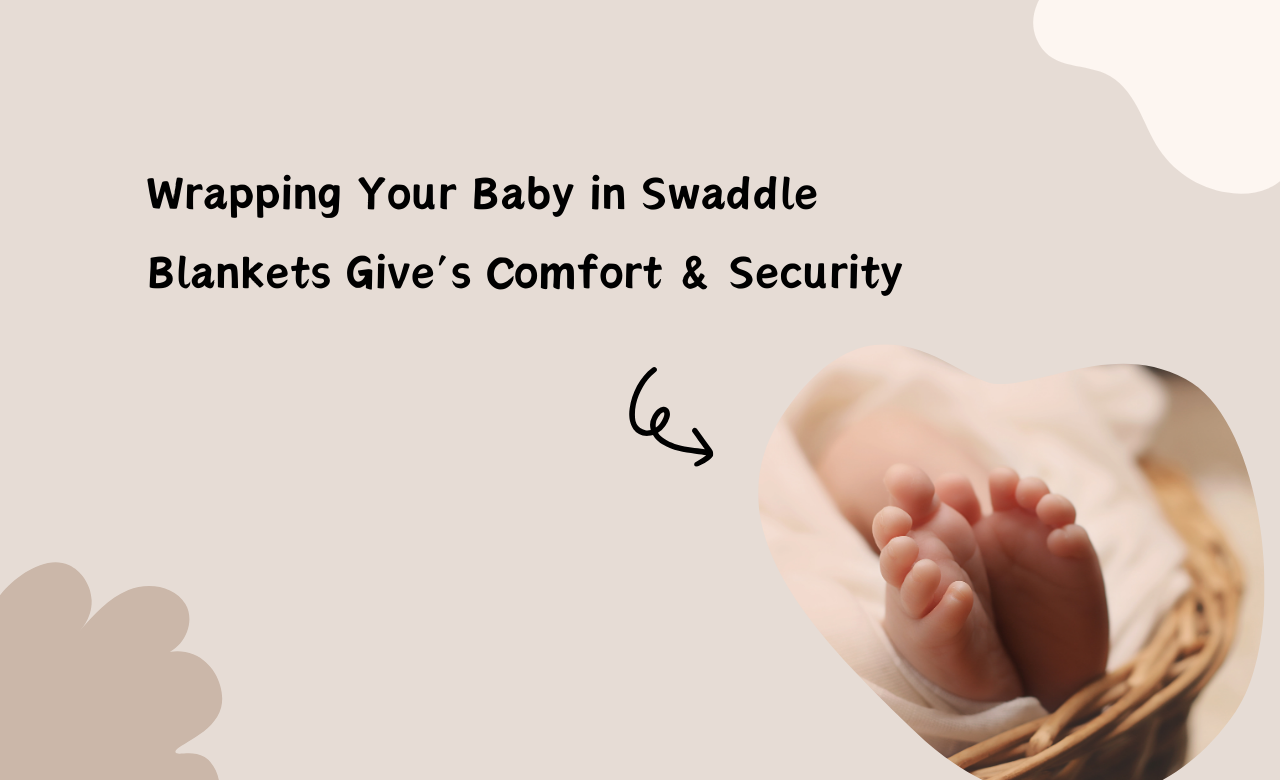
Wrapping Your Baby in Swaddle Blankets Give’s Comfort & Security
- Feb 12, 2024
- | 151
Bringing a newborn into the world is a precious and joyous experience, and as parents, ensuring their comfort and security becomes a top priority. In the realm of infant care, one timeless and essential accessory stands out – the swaddle blanket. These soft, snug wraps not only provide warmth but also create a sense of security for your little one. In this exploration, we dive into the world of swaddle blankets, understanding their significance, the benefits they offer, and tips for choosing and using them effectively.
The Gentle Embrace of Swaddle Blankets: A Time-Honored Tradition
Cocooning in Comfort: Swaddling is an age-old practice that involves wrapping a baby snugly in a blanket, creating a secure and cozy cocoon. This tradition has been passed down through generations, recognized for its ability to comfort and soothe infants.
Mimicking the Womb: The womb provides a warm and confined space for a developing baby. Swaddle blankets mimic this environment, offering a familiar sensation that can ease the transition from the womb to the outside world. The gentle pressure and containment of a swaddle create a sense of security for the newborn.
The Benefits of Swaddling: Beyond Cozy Comfort
Promoting Quality Sleep: One of the primary benefits of swaddle blankets is their role in promoting quality sleep for infants. The snug wrap helps prevent the startle reflex, allowing babies to experience longer and more restful sleep. This is especially valuable in the early weeks of a baby's life when sleep patterns are developing.
Reducing Anxiety and Stress: Swaddling has been shown to reduce anxiety and stress in newborns. The secure feeling provided by a well-wrapped swaddle can soothe a fussy baby, making them feel safe and protected.
Choosing the Right Swaddle Blanket: A Guide for Parents
Fabric Matters: Opt for swaddle blankets made from soft, breathable fabrics like muslin or jersey knit cotton. These materials ensure comfort and prevent overheating while providing a gentle embrace.
Size and Shape: Swaddle blankets come in various sizes and shapes. Consider larger blankets for versatility in swaddling techniques and ensure that the chosen size accommodates your baby's growth. Square blankets are popular for their adaptability.
Designs and Closures: Look for swaddle blankets with user-friendly designs and closures. Some feature adjustable wings or built-in closures that make swaddling easier for parents, ensuring a secure fit every time.
Mastering the Art of Swaddling: Step-by-Step Instructions
Step 1: Lay the Blanket Flat: Start by laying the swaddle blanket on a flat surface in the shape of a diamond.
Step 2: Fold the Top Corner: Fold the top corner of the diamond down to create a straight edge.
Step 3: Place the Baby on the Blanket: Lay your baby on their back with their neck along the straight edge, ensuring their shoulders are slightly below the top fold.
Step 4: Wrap the Left Side Across: Take the left corner of the blanket and wrap it across your baby's body, tucking it snugly under their back on the right side.
Step 5: Secure the Bottom Corner: Fold the bottom point of the blanket up and secure it by tucking it behind your baby's shoulder, creating a pocket for their feet.
Step 6: Wrap the Right Side Across: Finally, take the right corner of the blanket and wrap it across your baby's body, ensuring a snug fit. Tuck any excess fabric under your baby for a secure swaddle.
Safety First: Guidelines for Swaddling
Hip-Friendly Positioning: Allow room for your baby's hips to move freely when swaddling. The legs should be able to bend up and out at the hips, promoting healthy hip development.
Monitor Temperature: Be mindful of your baby's temperature to prevent overheating. Feel the back of their neck to gauge warmth, and dress them in appropriate layers underneath the swaddle.
Transitioning Out of Swaddling: Recognizing the Signs
Observing Developmental Milestones: As your baby grows and reaches developmental milestones, you may notice signs that it's time to transition out of swaddling. Increased mobility, attempts to roll, or signs of discomfort may indicate readiness for a change.
Gradual Transition: When transitioning out of swaddling, consider a gradual approach. Start by leaving one arm or both arms out of the swaddle while still providing a snug wrap around the torso for comfort.
Conclusion: Swaddle Blankets as a Symbol of Love and Security
Milk Snob swaddle blankets represent more than just a practical accessory for infants; they embody the age-old tradition of creating a secure and comforting environment for newborns. The gentle embrace of a well-wrapped swaddle provides not only warmth and comfort but also a sense of security that can contribute to a peaceful and restful sleep for your little one. As you embark on the journey of parenthood, may the art of swaddling become a cherished practice, symbolizing love, care, and the creation of a haven where your baby feels safe and nurtured.





